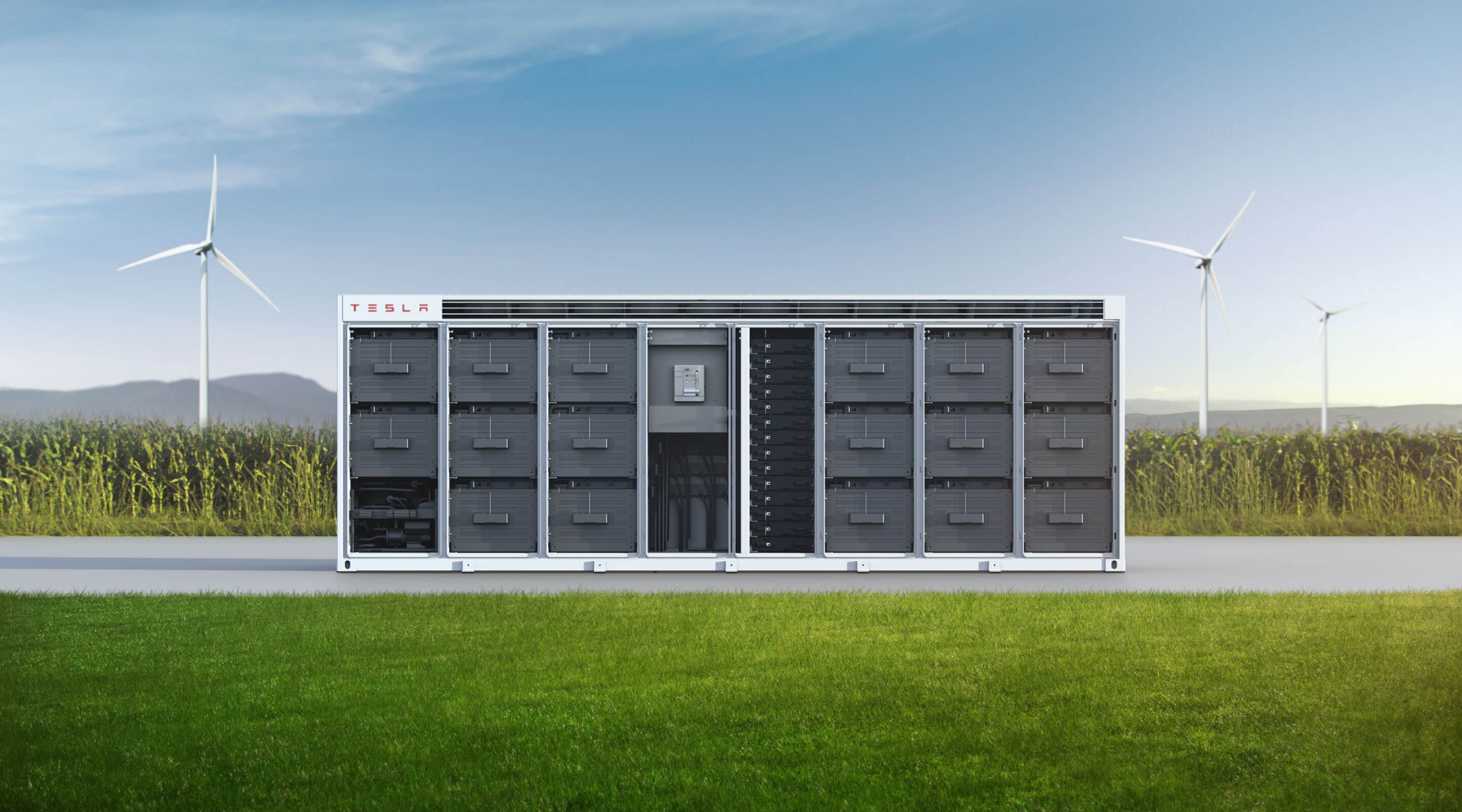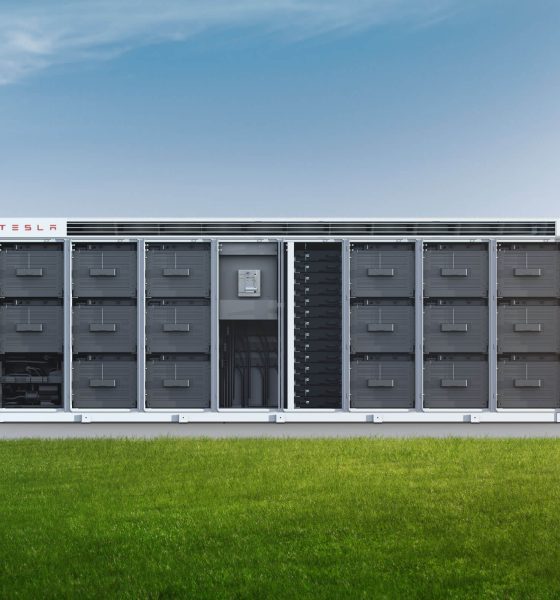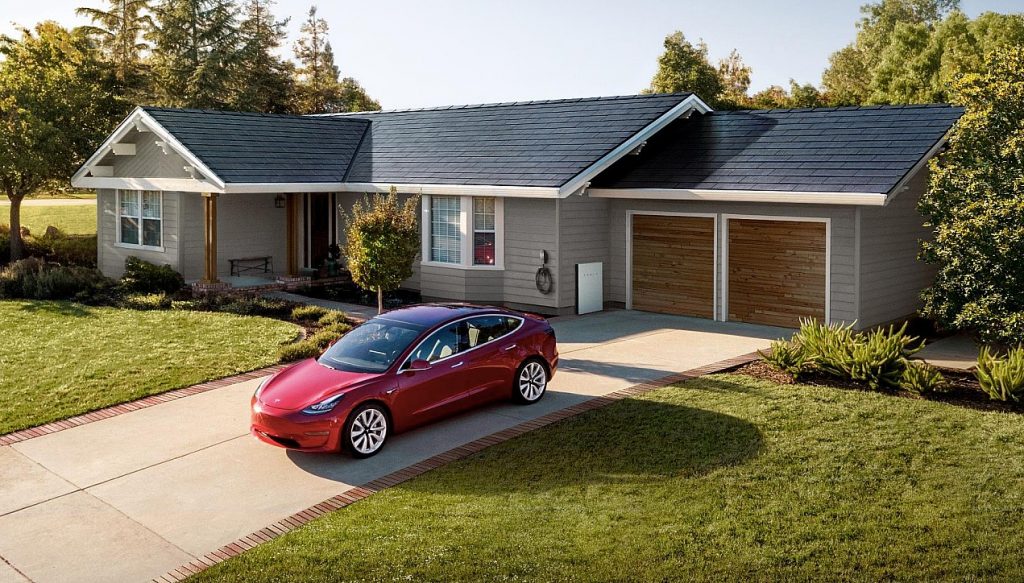

Energy
Tesla Energy’s role in the fight for a sustainable future explained by Elon Musk
If the contents of Tesla’s second quarter earnings report are any indication, Tesla Energy actually had a pretty impressive run during Q2, and that’s despite the presence of a pandemic. The Megapack, Tesla Energy’s flagship battery, saw high demand and was profitable, and installations of Solar Roof actually grew three times compared to the first quarter. Yet despite this, Tesla Energy is still largely ignored, especially among analysts covering the company.
This was the focus of an inquiry from a retail shareholder during the recently held earnings call. The question was simple, as it simply asked the company’s executives to share some details about Tesla Energy’s current and planned projects. Responding to the question, Elon Musk explained exactly how vital Tesla Energy is to the company’s overall mission, and how its products fit in with the Master Plan.
Tesla’s mission is to accelerate the world’s transition to sustainability. Such a lofty goal could not be accomplished simply by producing zero emissions vehicles. Musk, in his response, noted that Tesla Energy actually comprises two of the three elements of a sustainable energy future. He also emphasized that ultimately, Tesla Energy’s potential will be larger than the company’s electric car business, simply because the energy sector is far larger than the automotive industry.

“I kind of say — I think long term, Tesla Energy will be roughly the same size as Tesla automotive. The energy business collectively is bigger than the automotive business. So you say like, how big is the energy sector, big in automotive. And in order to achieve a sustainable energy future, we have to have sustainable energy generation, which I think is going to be primarily solar and — followed by wind. And those are intermittent, so you need to have a lot of batteries to store the energy because wind doesn’t always blow and the sun doesn’t always shine.
“So, there’s like three elements of the sustainable energy future. Wind and solar sustainable energy generation, battery storage and electric transport. Those three things. And the mission of Tesla is to accelerate sustainable energy. So that kind of says enough. The battery [Indecipherable] will both be enormous and they kind of have to be in order for us to have a sustainable future and we’ve got a great product road map on that front as well. So we’re going to ship in the Megapack. It’s very well received,” Musk noted.
Ultimately, this is a point that could catch analysts and critics off guard once more. Tesla, after all, has a pretty storied history of being dismissed and mocked for its lofty targets. Interestingly enough, it is this very factor that makes Tesla pleasantly surprising for its supporters, as the company has a stubborn tendency to eventually reach its goals, whether that involves the rollout of an impossible vehicle like the Model X or the construction of an impossible factory in one year like Gigafactory Shanghai.
Considering that Tesla Energy is still growing — albeit behind the scenes — there is a good chance that the business could soon become a part of the company that is simply impossible to ignore. This could be teased in the sheer appeal of the Megapack, which is already profitable despite being the largest of Tesla Energy’s battery storage solutions. Senior VP of Powertrain and Energy Engineering Drew Baglino discussed this in the recently held earnings call.
“I think the Megapack has represented itself and is an integrated rapidly deployable grid-tied storage battery of megawatt hour scale. We’re working with utilities, large and small, not just utilities, but also just like microgrid and project developers of all type and building our own projects where it makes sense and others. There’s a lot of demand for the product and we’re growing the production rates as fast as we can for that product,” he said.

Cybertruck
Tesla updates Cybertruck owners about key Powershare feature

Tesla is updating Cybertruck owners on its timeline of a massive feature that has yet to ship: Powershare with Powerwall.
Powershare is a bidirectional charging feature exclusive to Cybertruck, which allows the vehicle’s battery to act as a portable power source for homes, appliances, tools, other EVs, and more. It was announced in late 2023 as part of Tesla’s push into vehicle-to-everything energy sharing, and acting as a giant portable charger is the main advantage, as it can provide backup power during outages.
Cybertruck’s Powershare system supports both vehicle-to-load (V2L) and vehicle-to-home (V2H), making it flexible and well-rounded for a variety of applications.
However, even though the feature was promised with Cybertruck, it has yet to be shipped to vehicles. Tesla communicated with owners through email recently regarding Powershare with Powerwall, which essentially has the pickup act as an extended battery.
Powerwall discharge would be prioritized before tapping into the truck’s larger pack.
However, Tesla is still working on getting the feature out to owners, an email said:
“We’re writing to let you know that the Powershare with Powerwall feature is still in development and is now scheduled for release in mid-2026.
This new release date gives us additional time to design and test this feature, ensuring its ability to communicate and optimize energy sharing between your vehicle and many configurations and generations of Powerwall. We are also using this time to develop additional Powershare features that will help us continue to accelerate the world’s transition to sustainable energy.”
Owners have expressed some real disappointment in Tesla’s continuous delays in releasing the feature, as it was expected to be released by late 2024, but now has been pushed back several times to mid-2026, according to the email.
Foundation Series Cybertruck buyers paid extra, expecting the feature to be rolled out with their vehicle upon pickup.
Cybertruck’s Lead Engineer, Wes Morrill, even commented on the holdup:
As a Cybertruck owner who also has Powerwall, I empathize with the disappointed comments.
To their credit, the team has delivered powershare functionality to Cybertruck customers who otherwise have no backup with development of the powershare gateway. As well as those with solar…
— Wes (@wmorrill3) December 12, 2025
He said that “it turned out to be much harder than anticipated to make powershare work seamlessly with existing Powerwalls through existing wall connectors. Two grid-forming devices need to negotiate who will form and who will follow, depending on the state of charge of each, and they need to do this without a network and through multiple generations of hardware, and test and validate this process through rigorous certifications to ensure grid safety.”
It’s nice to see the transparency, but it is justified for some Cybertruck owners to feel like they’ve been bait-and-switched.
Energy
Tesla starts hiring efforts for Texas Megafactory
Tesla’s Brookshire site is expected to produce 10,000 Megapacks annually, equal to 40 gigawatt hours of energy storage.

Tesla has officially begun hiring for its new $200 million Megafactory in Brookshire, Texas, a manufacturing hub expected to employ 1,500 people by 2028. The facility, which will build Tesla’s grid-scale Megapack batteries, is part of the company’s growing energy storage footprint.
Tesla’s hiring efforts for the Texas Megafactory are hinted at by the job openings currently active on the company’s Careers website.
Tesla’s Texas Megafactory
Tesla’s Brookshire site is expected to produce 10,000 Megapacks annually, equal to 40 gigawatt hours of energy storage, similar to the Lathrop Megafactory in California. Tesla’s Careers website currently lists over 30 job openings for the site, from engineers, welders, and project managers. Each of the openings is listed for Brookshire, Texas.
The company has leased two buildings in Empire West Business Park, with over $194 million in combined property and equipment investment. Tesla’s agreement with Waller County includes a 60% property tax abatement, contingent on meeting employment benchmarks: 375 jobs by 2026, 750 by 2027, and 1,500 by 2028, as noted in a report from the Houston Business Journal. Tesla is required to employ at least 1,500 workers in the facility through the rest of the 10-year abatement period.
Tesla’s clean energy boom
City officials have stated that Tesla’s arrival marks a turning point for the Texas city, as it highlights a shift from logistics to advanced clean energy manufacturing. Ramiro Bautista from Brookshire’s economic development office, highlighted this in a comment to the Journal.
“(Tesla) has great-paying jobs. Not just that, but the advanced manufacturing (and) clean energy is coming to the area,” he said. “So it’s not just your normal logistics manufacturing. This is advanced manufacturing coming to this area, and this brings a different type of job and investment into the local economy.”
Energy
Tesla and Samsung SDI in talks over new US battery storage deal: report
The update was related by industry sources and initially reported by South Korean news outlets.

Recent reports have suggested that Tesla and Samsung SDI are in talks over a potential partnership to supply batteries for large-scale energy storage systems (ESS).
The update was related by industry sources and initially reported by South Korean news outlets.
ESS batteries to be built at Samsung’s Indiana plant
As noted in a report from Korea JoongAng Daily, the demand for energy storage systems has been growing rapidly in North America, thanks in no small part to the surge in AI investments across numerous companies. With this in mind, Tesla has reportedly approached Samsung SDI about a potential battery supply deal.
The deal is reportedly worth over 3 trillion Korean won (approximately $2.11 billion) and will span three years, according to The Korea Global Economic Daily. A battery supply deal with Samsung SDI could make sense for Tesla as the company already has a grid-scale battery, the Megapack, which is perfect for industrial use. Samsung SDI could simply supply cells for the EV maker.
Production of the batteries would reportedly take place at Samsung SDI’s joint venture factory with Stellantis in Indiana, which is currently under construction. Samsung SDI recently announced plans to use part of that plant’s EV lines to produce cells for ESS, with a targeted capacity of 30 GWh by the end of next year.
Tesla and Samsung’s partnership
At present, only a handful of manufacturers, including Korea’s LG Energy Solution, Samsung SDI, SK On, and Japan’s Panasonic, are capable of producing energy storage-scale batteries domestically in the United States. A Samsung SDI official issued a comment about the matter, stating, “Nothing has been finalized regarding cooperation with Tesla.”
The possible energy storage system deal adds another layer to Tesla’s growing collaboration with Samsung, which is already in line as a partner in the upcoming production of Tesla’s AI5 and AI6 chips. Early sample manufacturing of the AI6 is expected to begin in South Korea, with mass production slated for Samsung’s Texas-based Taylor foundry when it starts operations.
The AI6 chip will power Tesla’s next wave of high-volume projects, including the Optimus humanoid robot and the autonomous Cybercab service. Musk has called the partnership with Samsung a “real collaboration,” adding that he personally plans to “walk the line” at the Taylor facility to speed up progress.








